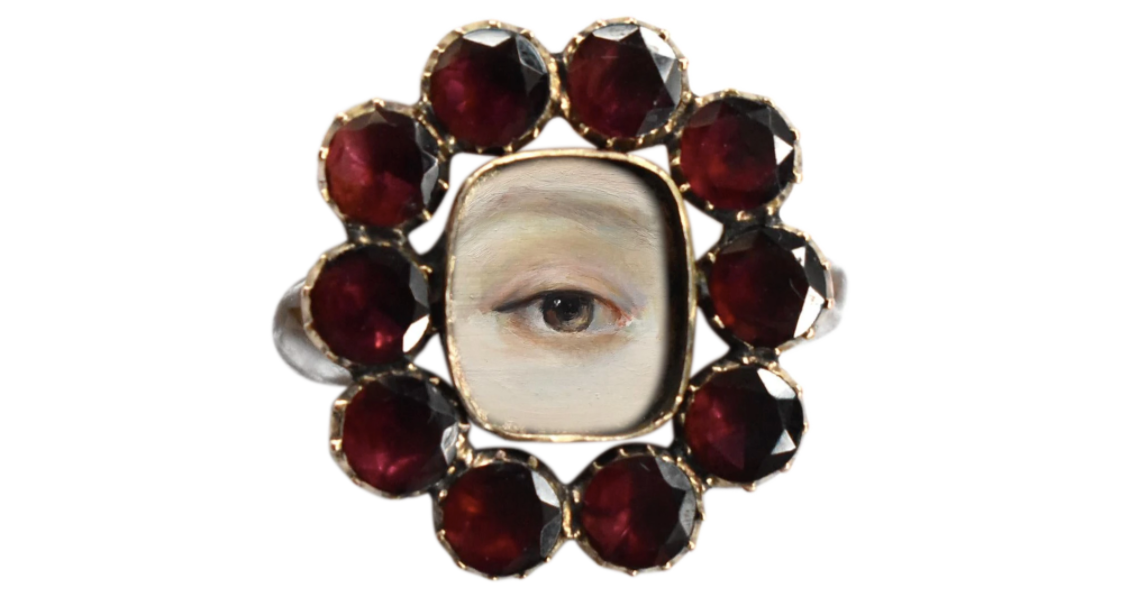Lady of terror, lady of life—Goddess of the all in all, Sekhmet cultivated sacred tension throughout ancient Egypt.
Often depicted as a lion-headed woman crowned by the sun, She Who Is Powerful was honored as both creator and destroyer in the Book of the Dead. Impassioned manifestation of the feminine Divine, Sekhmet blazed in the heat of the midday sun. She was the protector of balance and deity of hallowed ruin as well as enthusiastic creation. As the Red Lady, her holy presence could be felt wherever lifeblood flowed. And thus the crimson garnet was her gemstone.

Said to embody living fire by the medieval Dutch philosopher Erasmus, garnets have enamored humankind for almost as long as we’ve been roaming the earth. Taking their modern name from the Latin word granatum—meaning seed-like—garnets were discovered in the land currently claimed by the Czech Republic and Slovakia as early as the Bronze Age. Though often thought of as a red gemstone, the colors in which garnets can be found span the rainbow, with blue garnets being the most infrequently discovered. And contributing to the garnet’s reputation as a most dynamic gemstone is the fact that the name itself applies to a group of minerals with six main varieties that share the same crystal system while differing in color and chemical composition.

Among those garnets most beloved for their gorgeous vermilion, carmine, and claret hues are the pyrope garnet, almandine garnet, and rhodolite garnet. And among the most famous of pyrope garnet creations is the antique pyrope hair comb donated to the Smithsonian National Museum of Natural History in 1937. Fashioned from rose cut Bohemian pyrope garnets, this masterpiece of adornment is a thrilling spectacle of garnet beauty created during the Victorian era when these stunning gemstones were all the rage.

Long before the majestic hair comb was fashioned, though, garnet had earned a reputation as a regal stone, a gem of protection and enlightenment throughout the world and time. Ancient Egyptian pharaohs were often buried with garnet amulets, and Roman patricians used imposing garnet signet rings as seal and signature on important documents. In the Greece of Pythagoras, Homer, and Xenophanes, garnets were called Lamp Stones, and it was believed wearing one around your neck would enable you to see in the dark. But the luminous lore of the garnet was not confined to Greeks. According to the Talmud, the Hebrew hero Noah used garnets to illuminate his nighttime travels through the abundant water which covered the earth during the great flood.
With a scarlet color suggestive of blood and a reputation as a gemstone consecrated to the Goddess of dualities herself, it hardly comes as a surprise that red garnets are credited with both bestowing invulnerability on those in battle and inflicting wounds worse than those caused by lead bullets. In fact, during the 1892 battles between Hunza fighters and British troops on the Kashmir frontier, the Hunza used garnets as bullets in the belief that any injuries caused by these blood-colored stones would be deadly. Yet throughout time and civilizations, red garnet in particular has also been credited as a healing gem for diverse disorders of the blood.

Brilliant birthstone of January and the favored stone for celebrating second anniversaries, garnets continue to dazzle the world with their vibrant beauty and expressive significance. Gorgeous gemstones of the root chakra, garnets are said to stimulate kundalini energy and encourage a sense of being established in one’s own magnificent being. Like the Goddess Sekhmet, garnets embody balance and are credited with revitalizing energy where it is dim while granting tranquility to frenetic hearts and minds. An invitation to savor the marvel of life in all its contradictions, garnets honor the essential force within us that connects us to our hidden selves as well as the hearts of others.
